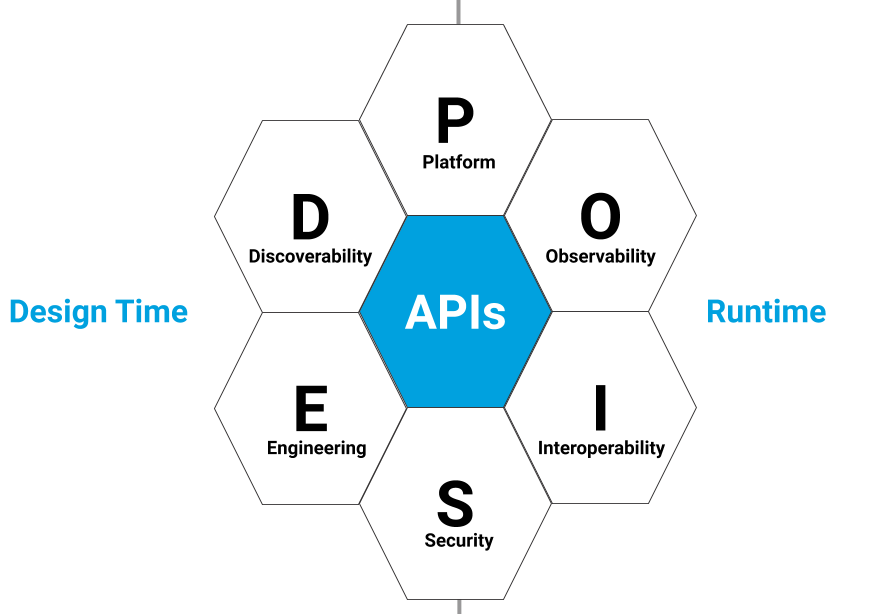At MuleSoft, we’ve worked hard to develop programs and guidelines to help our customers and the market see APIs as more than just project outcomes. APIs are digital products, worthy of respect throughout their whole lifetime, and critical enablers of ongoing digital transformation.
That’s why I was really excited when we announced our API Strategy Workshops. They provide practical support to implement our API Strategy Blueprint. There is a lot of great material in them, but in this blog I want to concentrate on the role API standards play as a key foundation of MuleSoft’s API Strategy Blueprint.
Why are API standards so useful?
Rather than explaining why they are important, it’s probably easier to explain the how! This is because the role of API standards in effective digital transformation has evolved away from the big stick of governance. When you couple this with the move to APIs as business-aligned products, we can start to see that API standards provide a common framework to align your language and culture, accelerate design and development, and simplify engagement within your API ecosystem for a broad range of stakeholders. In short, API standards can do a lot to help make your API program successful!
API standards are normally initially defined (and evolved incrementally then on) as part of defining your technology roadmap when you establish strategy. Let’s dig into how they then support aligning your organization and culture, evaluating and building technology, and engaging your ecosystem.
Aligning organization and culture
The purpose of aligning on organization and culture is to create a common sense of purpose and vision for all stakeholders to work towards. This can be a common goal that everyone is working to achieve or overcoming a blocker in the way of organizational success. API standards can help ensure alignment as they create a common language and working culture as a team works toward building an API product.
If your organization is aligned on using API products as the key for digital transformation success, then defining those API products becomes critical. Having a set of standards for defining them ensures that everyone understands exactly how they operate and how to describe and evolve them over time. Essentially, by defining your API products in a common way, you are helping everyone to communicate effectively and stay aligned.
Evaluate and build technology
The focus for evaluating and building technology is to identify the capabilities you need to deliver on your API strategy and source a platform, or platforms, to meet them. Once you’ve done that you can build up your delivery capability. There will be a mixture of design time capabilities, such as API discovery and API engineering, as well as runtime capabilities such as API observability and API interoperability required. There will also be some cross-cutting concerns, such as API management of the business platform and API security, that exist in both domains. Have a look on our API Strategy Blueprint for more details on these capability requirements.

API standards can help when selecting a platform, as they constrain what the platform must be able to support. For example, if OAS or RAML is the design specification of choice then the tools will need to support that. If data types need to be modeled in a certain way, then you’ll need a platform to support that as well. However, API standards aren’t just there to help at design time, they can also cover runtime and cross-cutting concerns.
As an example, let’s consider API security. Your API standards should set minimum standards for security, including such concerns as authentication. A good set of standards will standardise these requirements, allowing you to constrain your platform choices, as well as accelerate eventual delivery. There are other examples in the runtime space, such as API observability. If you have a well-defined set of standards around resource URL definitions, for example, it makes it much easier to build operational dashboards in a consistent way, improving understanding and visibility of usage patterns.
Engage your ecosystem
Finally, let’s consider how API standards can help with engaging your ecosystem. This is a critical success factor. Here we are trying to crowdsource innovation and accelerate the delivery of quality change and new business value by encouraging self service, fostering outside-in thinking, and enabling all our stakeholders to work together efficiently and effectively. We need to meet our internal and external developers where they are, delivering high quality assets (API products) which they can adopt quickly and easily.
API standards are a great accelerator as they provide consistent and easy to understand API product specifications, allowing rapid “time to first Hello World.” They should create easy-to-follow documentation, clear rules on depreciation and versioning, simple rules on security and access…the list goes on!
Without a good set of standards, your ecosystem of stakeholders will have to be constantly reinventing the wheel to consume your business assets. They’ll be so focused on the technical adoption that they won’t be able to focus on innovation and delivery of new value. For external developers and partners, too much friction may push them away from working with you. A solid set of API standards will ensure that your ecosystem can work with the least possible friction.
Reusing APIs API standards
Here at MuleSoft we are all about reuse! When we talk about reuse we don’t just mean APIs from a consumer point of view, but every step in the API product lifecycle whether it be design, development, or operations. If we apply that thinking to rolling out an API strategy, then it’s clear we should leverage the experiences gained by others, which is why we created our API Strategy Workshops, so our customers could reuse what we’ve learned.
If you apply the thinking to API standards, then it’s clear one should start by looking out in the market to see what other organizations are doing when it comes to API standards. Sadly, few companies share their design standards to external parties without sign-up, but there are a few that do. For an example of this, look at the API Standards published by GDS in the UK. If you dig around, there are more provided by vendors and organizations around the world. Once you have the basics in place, you can expand them to fulfill all the purposes I’ve mentioned above.
Good luck with defining your own API standards, and remember to consider the role they can play in all areas of a successful transformation!
Stay tuned as we announce more API Strategy Workshops, including agendas and venues. We look forward to seeing you soon.









